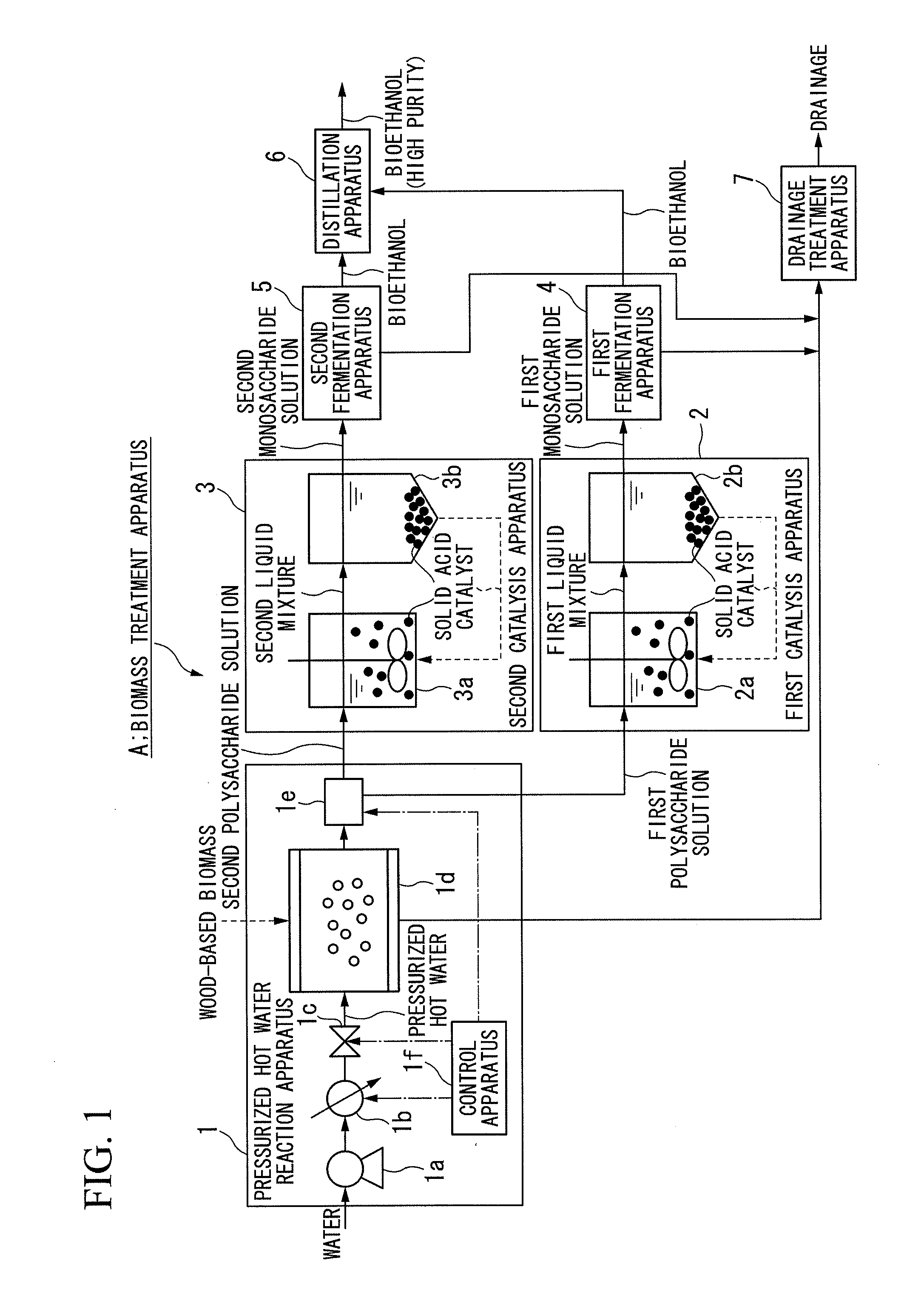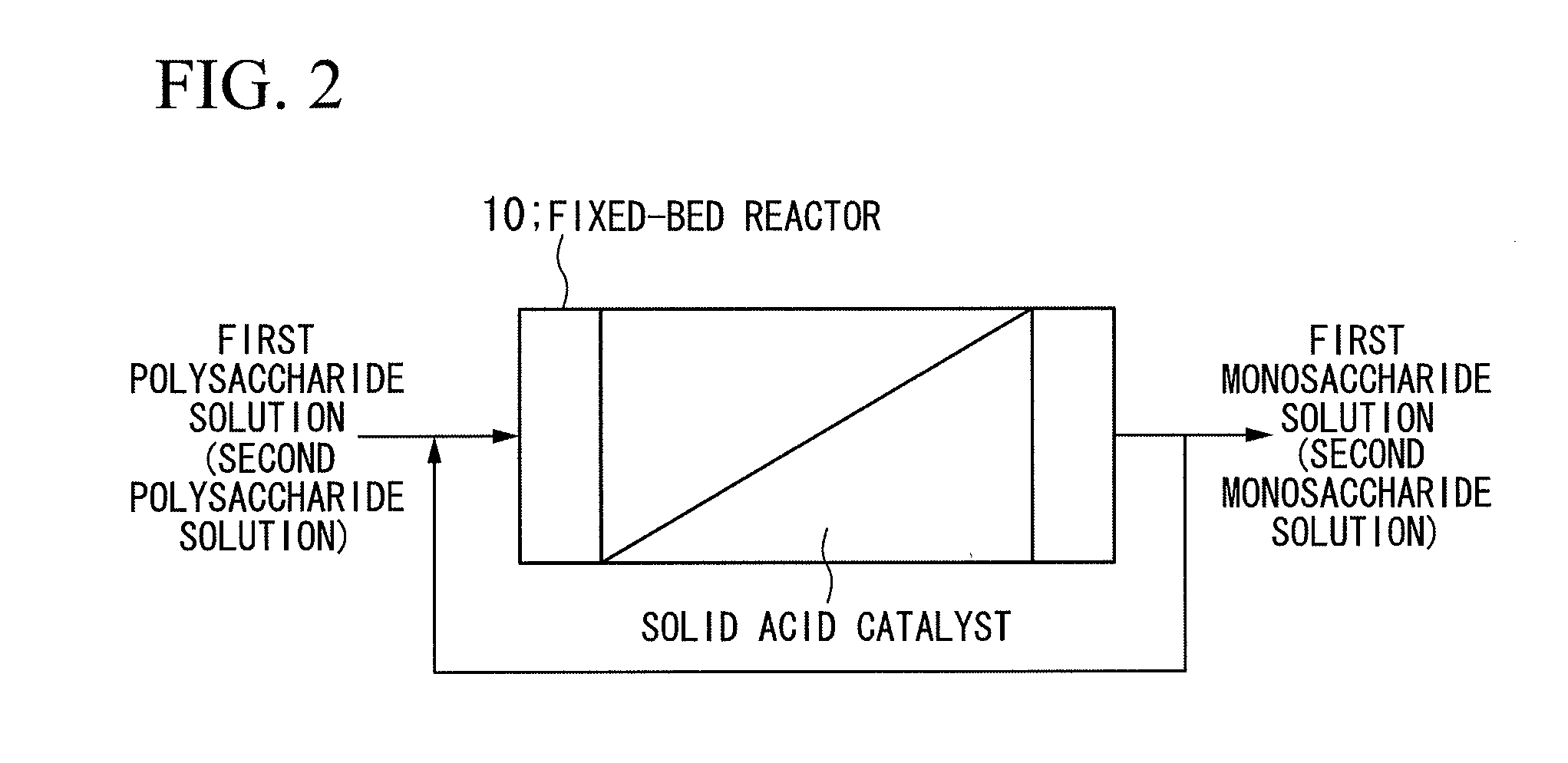System and method for treating biomass
a biomass treatment and biomass technology, applied in the field of biomass treatment apparatus and method, can solve the problems of inability to recycle, inability to dispose of liquid waste, and inability to reduce the amount of final resultant of monosaccharides that can undergo alcohol fermentation (glucose and xylose), and achieve the effect of not slowing down the reaction rate, increasing the amount of final resultant of monosaccharides that can undergo alcohol fermentation (glucose and xylose) and improving the yield o
- Summary
- Abstract
- Description
- Claims
- Application Information
AI Technical Summary
Benefits of technology
Problems solved by technology
Method used
Image
Examples
Embodiment Construction
[0028]Hereinafter, an embodiment of the invention will be described with reference to the accompanying drawings.
[0029]FIG. 1 is a schematic configuration view of a biomass treatment apparatus A in the present embodiment. As shown in FIG. 1, the biomass treatment apparatus A is a chemical plant that generates bioethanol using wood-based biomass containing cellulose, hemicellulose, and lignin as the main components, such as wood chips or construction waste, which are biomass, as a raw material. The biomass treatment apparatus A is constituted by a pressurized hot water reaction apparatus 1, a first catalysis apparatus 2, a second catalysis apparatus 3, a first fermentation apparatus 4, a second fermentation apparatus 5, a distillation apparatus 6, and a drainage treatment apparatus 7.
[0030]Meanwhile, in FIG. 1, the solid line indicates a flow of liquid, the broken line indicates a flow of solids, and the dotted line indicates a flow of an electric signal.
[0031]The cellulose included i...
PUM
| Property | Measurement | Unit |
|---|---|---|
| temperature | aaaaa | aaaaa |
| temperature | aaaaa | aaaaa |
| temperature | aaaaa | aaaaa |
Abstract
Description
Claims
Application Information
 Login to View More
Login to View More - R&D
- Intellectual Property
- Life Sciences
- Materials
- Tech Scout
- Unparalleled Data Quality
- Higher Quality Content
- 60% Fewer Hallucinations
Browse by: Latest US Patents, China's latest patents, Technical Efficacy Thesaurus, Application Domain, Technology Topic, Popular Technical Reports.
© 2025 PatSnap. All rights reserved.Legal|Privacy policy|Modern Slavery Act Transparency Statement|Sitemap|About US| Contact US: help@patsnap.com


